Charleston Milling Company "Charmco"
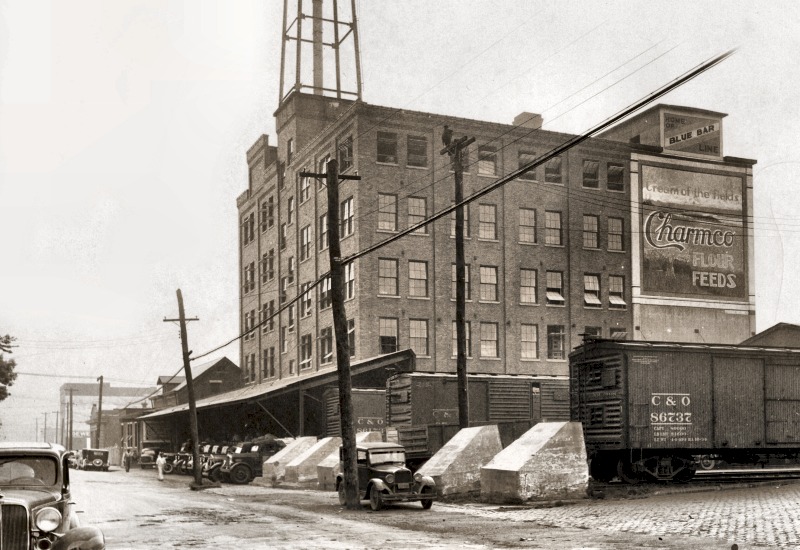
Charleston Milling Company or "Charmco" was one of the oldest businesses in the valley, starting in 1850.
Located
on Morris Street between Baines and Smith, this company made
anything dealing with grains, from flour, biscuit mix, pancakes,
and everything in between including animal feeds. This
building still stands across from the Appalachian Power Baseball
Park. FULL HISTORY BELOW
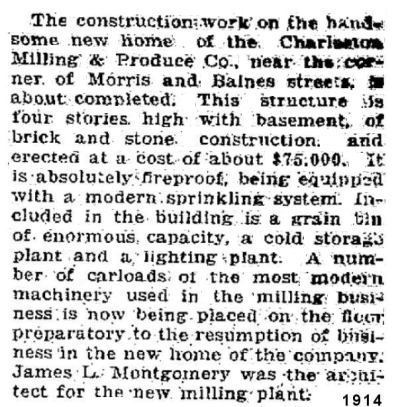
|
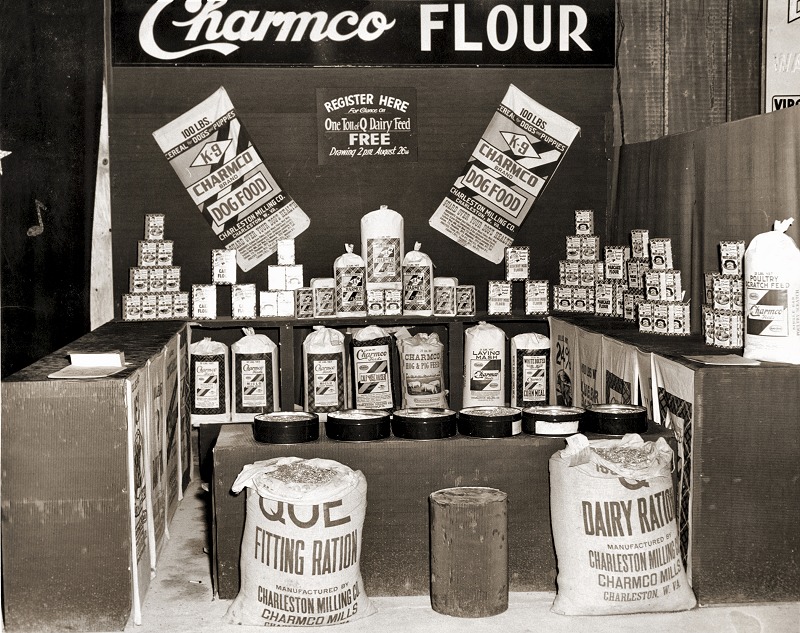
Some of the many products
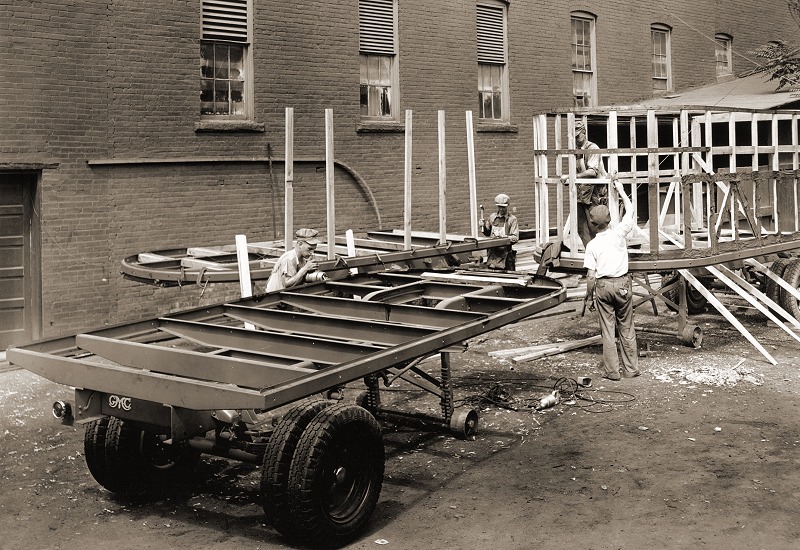
Charmco made all of its own trailers for its tractor-trailers
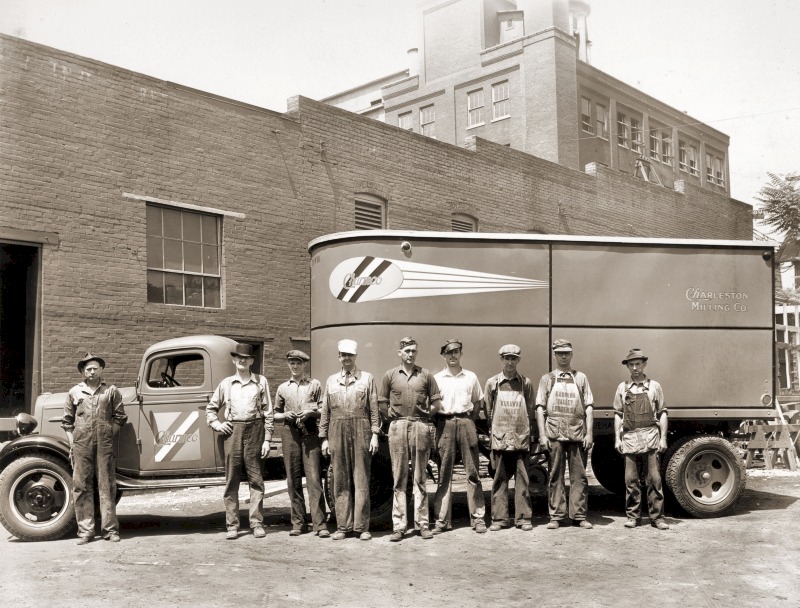
The mechanics and carpenters showing off a new trailer
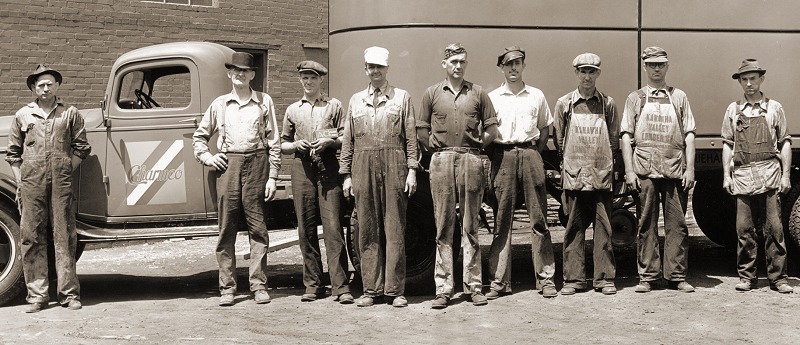
Close-up of the gang. One may be your grandfather.
|
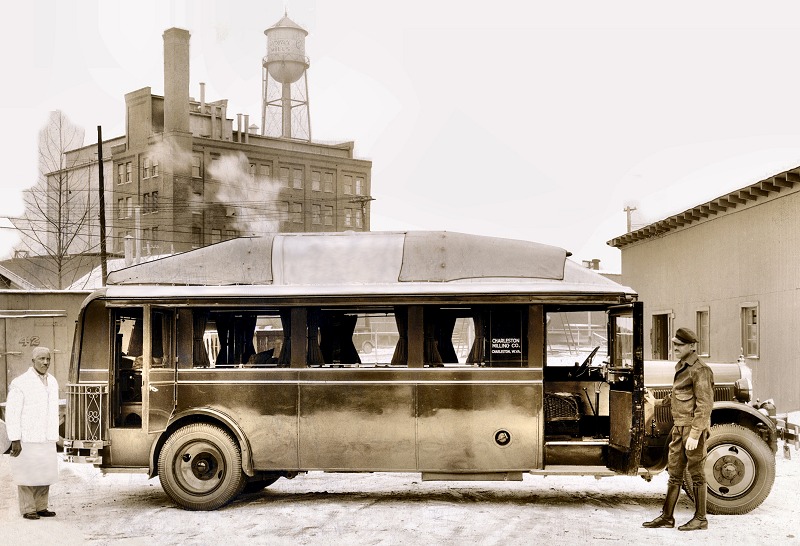
This is a private motor home that the gang made from a bus around 1934. The driver and cook unknown. 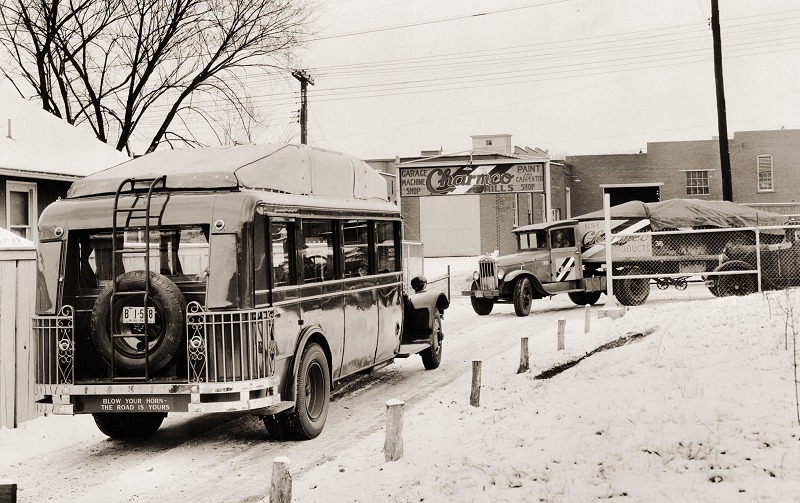
This had to be one of the earliest and finest motor homes on the road at that time.
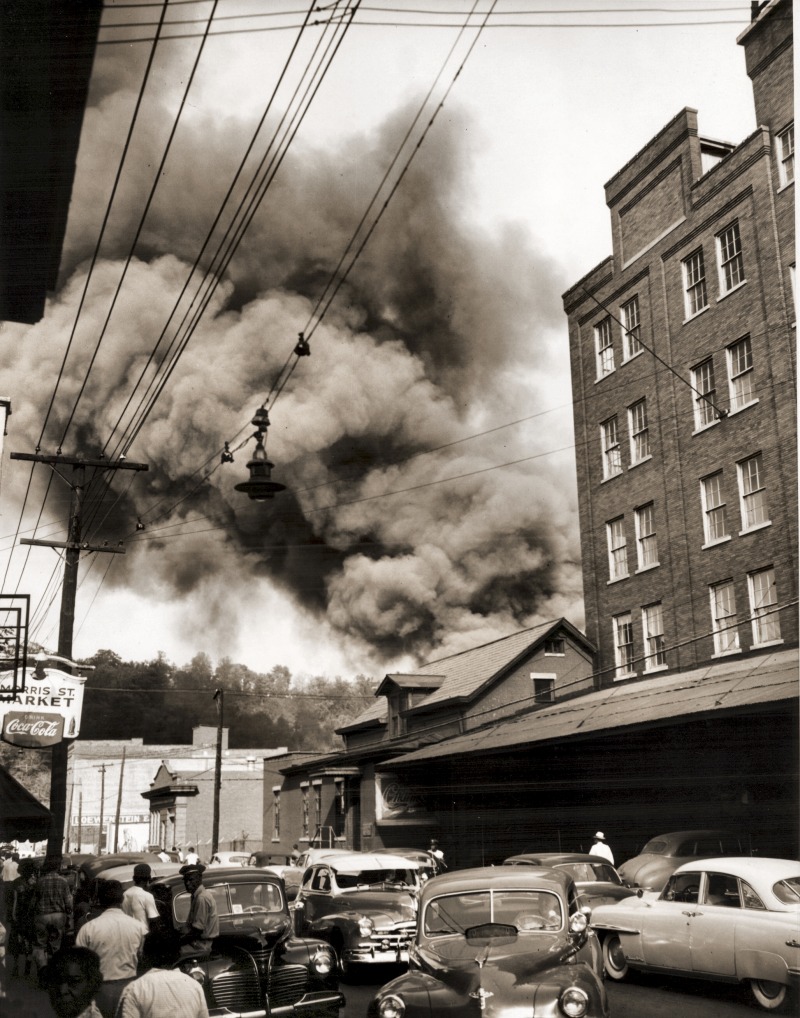
In
1952, Charmco's garage burned to the ground with extensive
damage. The fire was caused by a transient who was urinating
behind the garage and tossed a cigarette close to the building.
The garage was not attached to the main building so there was no
damage to the plant itself. This is an excellent shot of Morris Street.
|
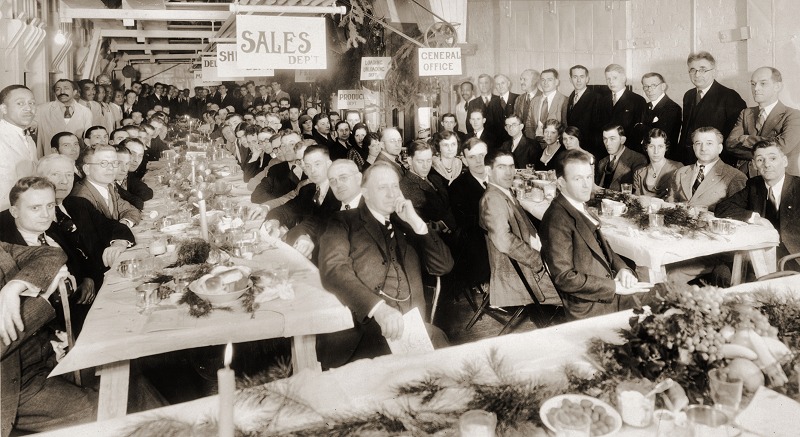
The yearly Christmas party for all the employees. 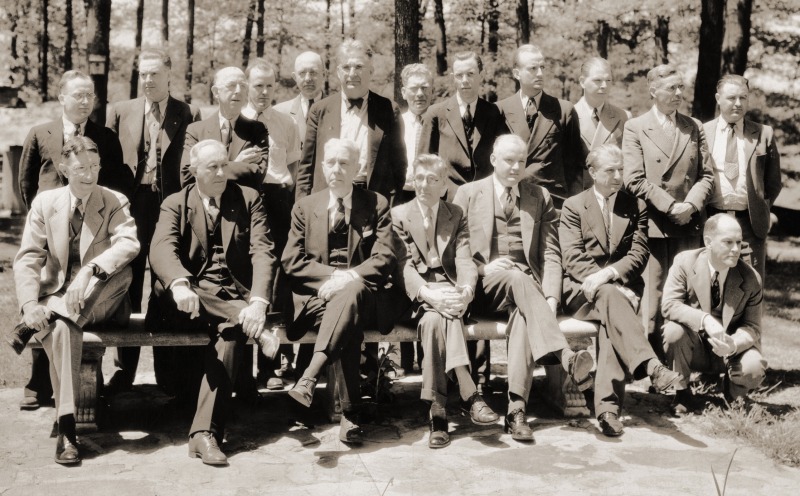
Included
in the photo is Mr Harvey Davis, President of the company. This
photo was taken at his home at the corner of Oakwood Rd and Corridor G.
The home and beautiful property is still there today. It's
unknown who the others are in the photo, but probably top salesmen and
friends. 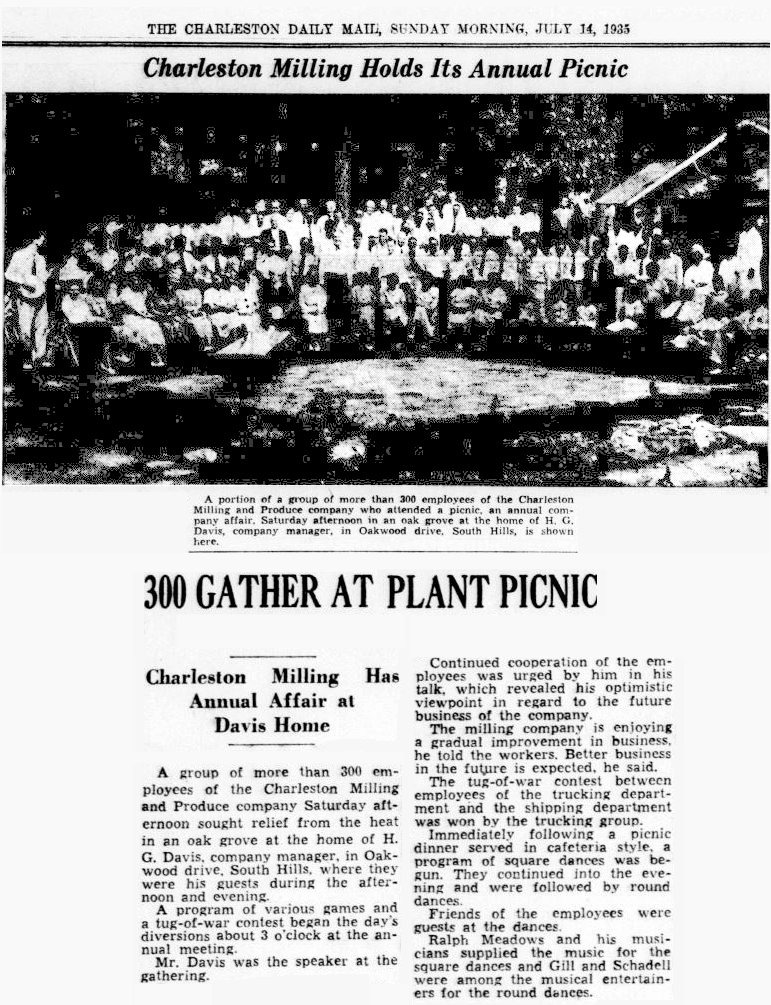
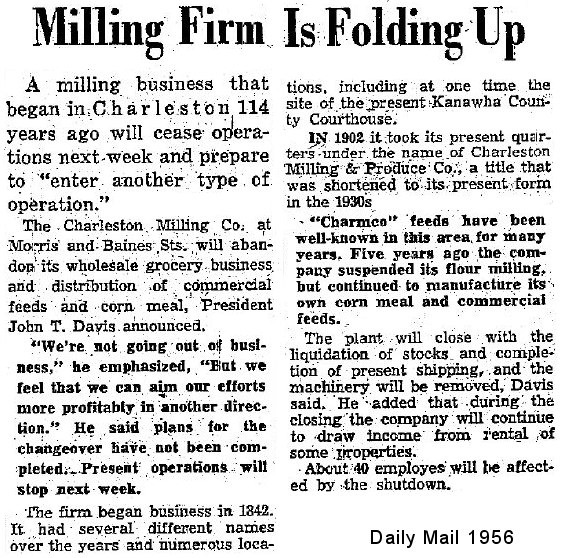
BY 1956, ALL THE BIG BOYS LIKE PILLSBURY, GOLD MEDAL, AND OTHERS BECAME PROMINENT 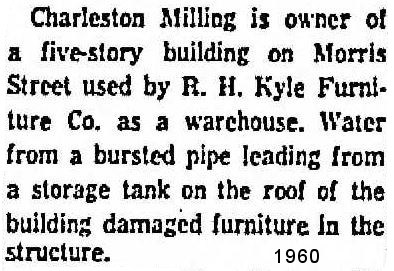 Kyle Furniture then rented the building for many years as a furniture warehouse. Kyle Furniture then rented the building for many years as a furniture warehouse.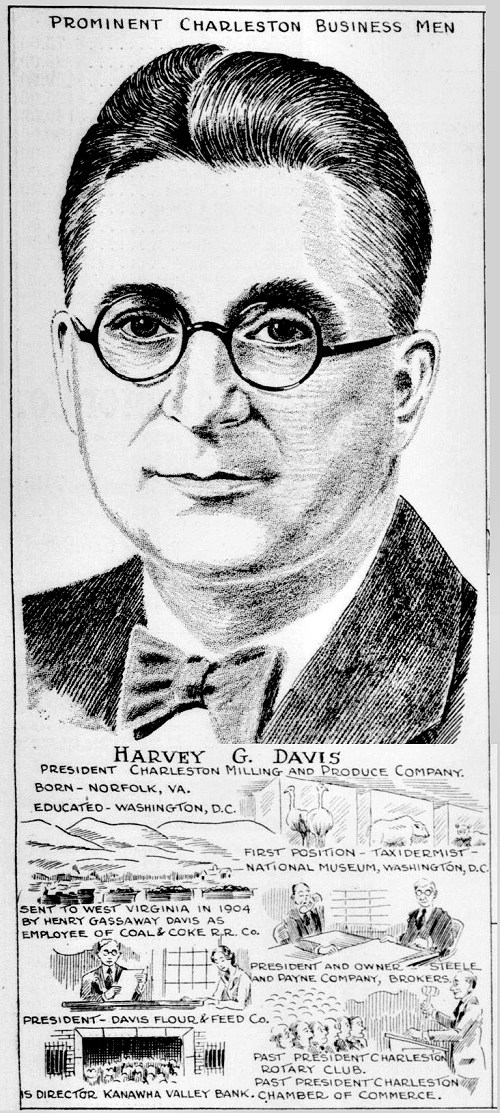
************
I
find the information below very interesting. Harvey Davis owned
"Davis Flour and Feed" on Kanawha Two Mile before he went over the
Charleston Milling and later to head-up the entire operation. I
would love to know where exactly on Kanawha Two Mile his wholesale
Flour and Feed store was located.
|
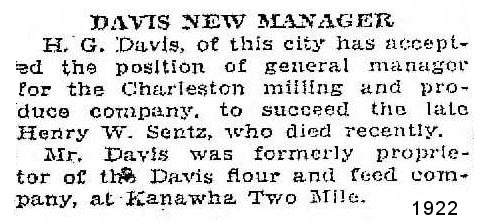
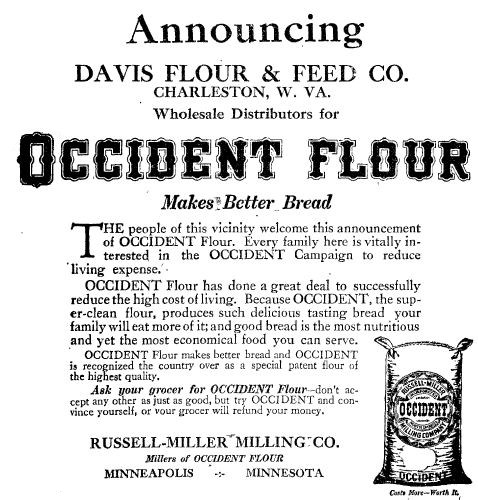
HISTORY OF CHARLESTON MILLING
|
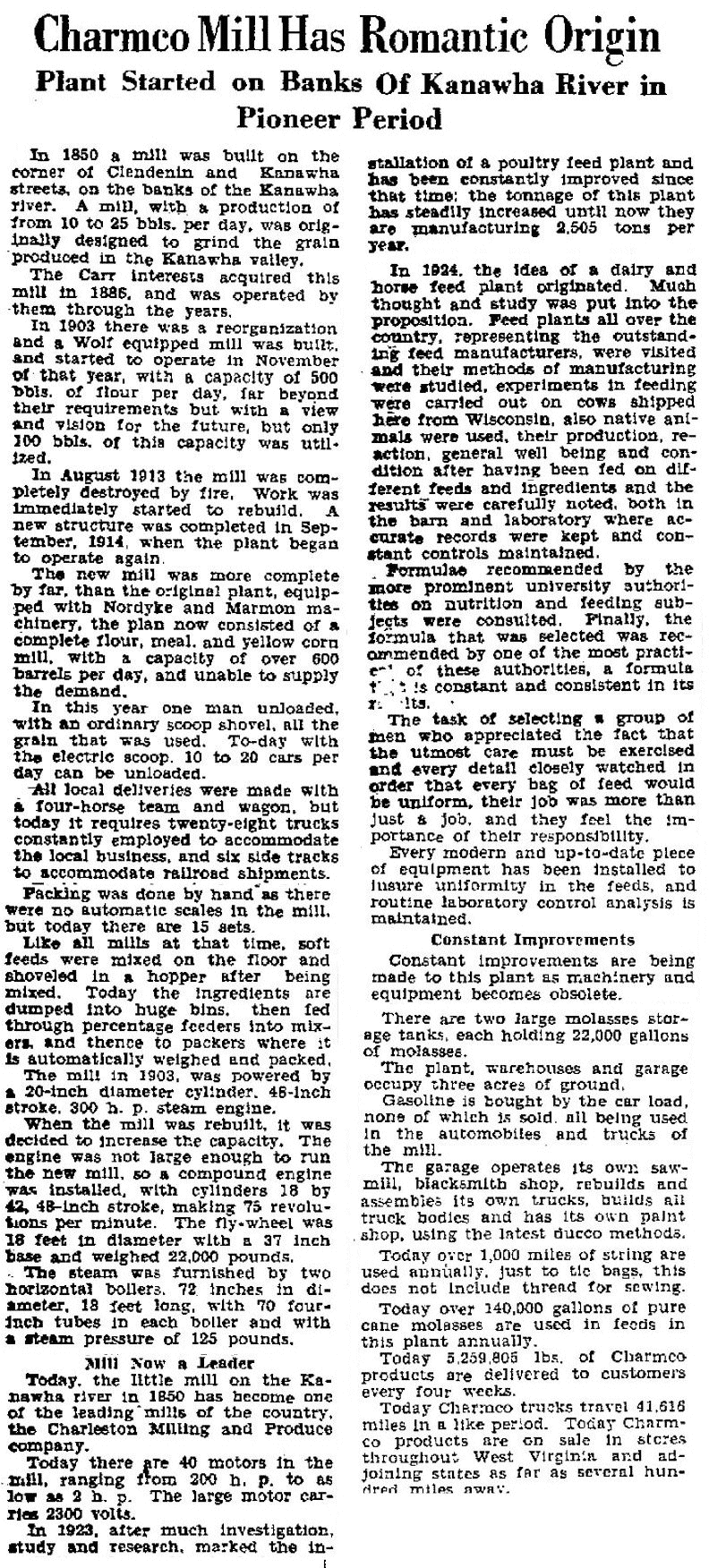
FROM THE CHARLESTON GAZETTE Once
known as “The Charleston Grain and Feed Company,” the mill was moved to
Charleston from Buffalo, in Putnam County, in 1850 to grind
locally-grown grain. The owners first settled the milling company in
Charleston at the corner of Kanawha Boulevard and Clendenin Street.
In
1903, the milling company was reorganized and combined with a wholesale
produce business to form Charleston Milling and Produce Company. It was
moved to a new building at the corner of Morris and Smith streets, and
produced up to 500 barrels of flour daily — until it completely burned
down in 1913.
Within a year, the mill was rebuilt and reopened.
Modern technology (for the time) was included, as were new white and
yellow corn mills. The new mill was capable of producing 800 barrels of
white flour a day, and 600 each of white and yellow corn.
Harvey
Davis, a well-known local entrepreneur who was married to Dorcus
Dickinson, acquired the milling company several years later, in 1922.
At that point, the mill had been in operation for more than 70 years.
Davis,
who had come from Norfolk, Virginia, and had lived in Charleston for
some time, made several upgrades. The company began using motor trucks
for deliveries; before that, all local deliveries were made by
horse-drawn wagon.
The mill’s source of power was changed from steam to electricity, allowing for more flexibility in production.
Also,
until 1923, all commercial feeds sold by the mill were purchased from
large out of state mills. The company soon began producing its own
feeds for cattle, horses, pigs, chickens and other livestock.
The
name “Charmco” came from a contest to name the mill’s new all-purpose
family flour, which was produced from a particular variety of Kansas
wheat. Charmco became the name of all of its products, including its
new pancake flour, buckwheat flour, prepared biscuit flour, self-rising
flour and others.
Over the next four decades, several
improvements were made. Fleets of Charmco trucks were noticed
throughout all of West Virginia.
“Naturally the Charleston
Milling Company has always developed a profitable business, but at the
same time it has been on great service to the community,” reads the
document. “It has been estimated that a company this size, through its
employees, supports around 600 individuals.”
To this day, a small town in Greenbrier County bears the Charmco name, a request granted by the company in 1926.
Once
Harvey Davis died in the 1950s, his son, George, took over the
business. Charmco was transformed into a commercial real estate leasing
company, which George served as the president and chairman of until he
retired more than two decades ago. In 2001, he sold the Charmco
building, built in 1914, to the late Charleston developer Al Summers.
The building still stands, a five-story edifice directly across Morris
Street from Appalachian Power Park, and is available for lease through
The Summers Company.
Though the son of a prominent Charleston
entrepreneur, George Davis always shied away from the spotlight. He
preferred to avoid comments in the media regarding his family’s
business and mostly kept to himself.
When he died from stomach
cancer in May 2017, the last of six siblings, Davis left behind no wife
or children. He had three heirs — two religious entities, which didn’t
want to be identified, and longtime friend Paul Young, who met Davis
when he was 6 years old. Their families attended the same church,
Sacred Heart, and lived near each other in South Hills.
“When I was growing up, he was just like a brother,” Young said.
Among other things, Young said, he was fascinated by the Davis family’s pigeons.
“He
had some that would do back flips and go down so far, and then he had
some that would blow a pouch out in front, they called those pouters,
just different kinds of pigeons,” Young said.
Davis also had
tropical fish and enjoyed riding his Tennessee walking horses. Young
said he lived a very “simple life,” and was very religious.
“He
went to church every day, he went to mass every day and when he got
real bad, he watched it on TV, and sometimes I’d take him communion at
home,” Young said.
Young said Davis studied at a Dominican
seminary, planning to become a priest, before returning home to help
with his family’s business.
He lived in his family’s South Hills
home until his death. Young took care of him and the house, and still
does the latter to this day.
“I still check the house and cut the grass,” Young said. “I did it before and I’ll just keep doing it.”
Young
took the religious pieces from Davis’ home to Sacred Heart and only
kept the kitchen table, which he sat at often, for himself.
“We
went through and marked a bunch of stuff we wanted to keep,” Young
said. “Then I sat down with Steve [Mullins] and Steve said something
like, ‘Do you want to round the corner every time in your house and be
reminded and feel sad that he’s gone?’ and the tags came off.”
Soon,
the historic estate will go to auction, and several of the Davis
family’s antique pieces, including relics from Charmco, will be sold to
the highest bidders.
|

|

















